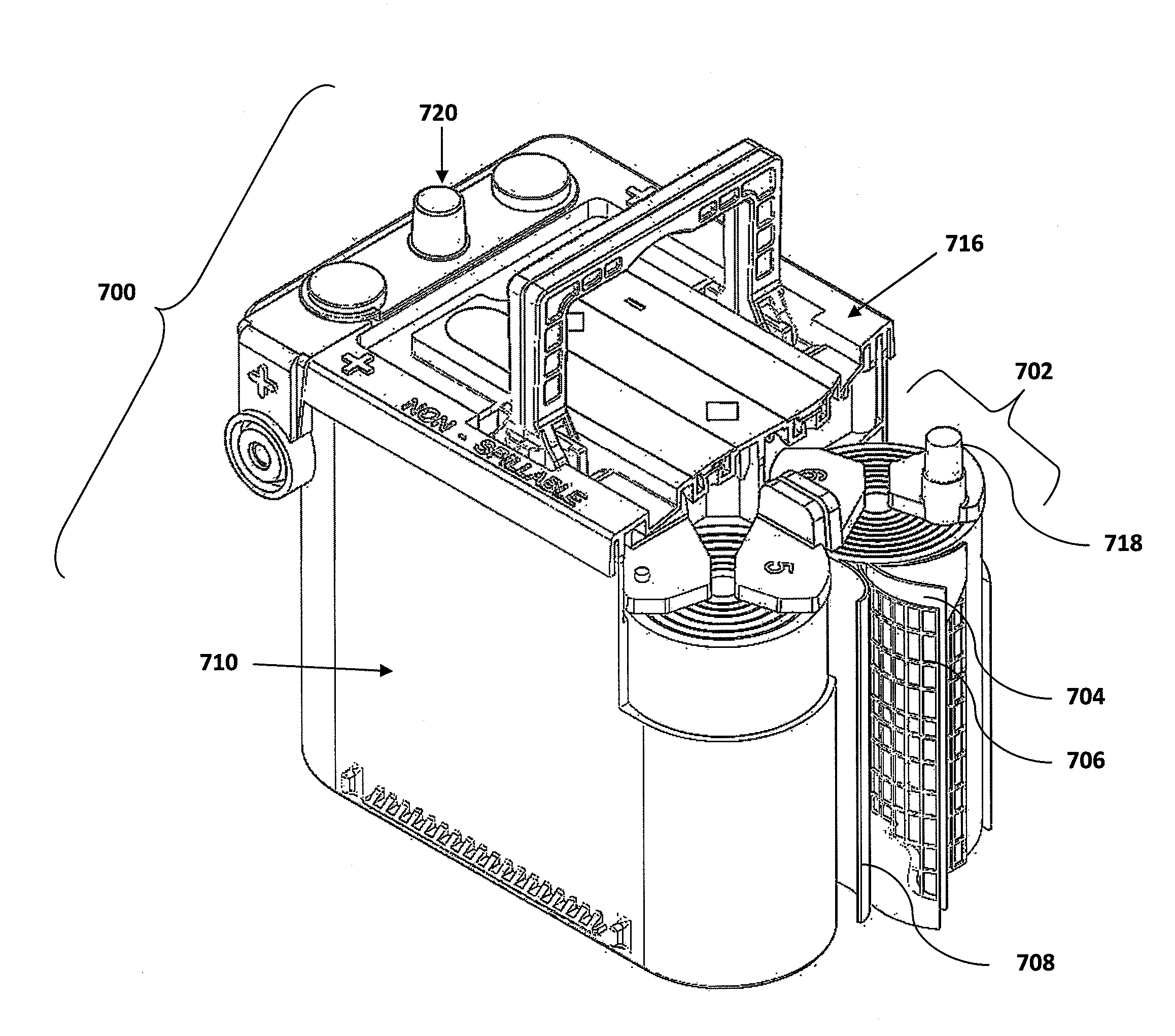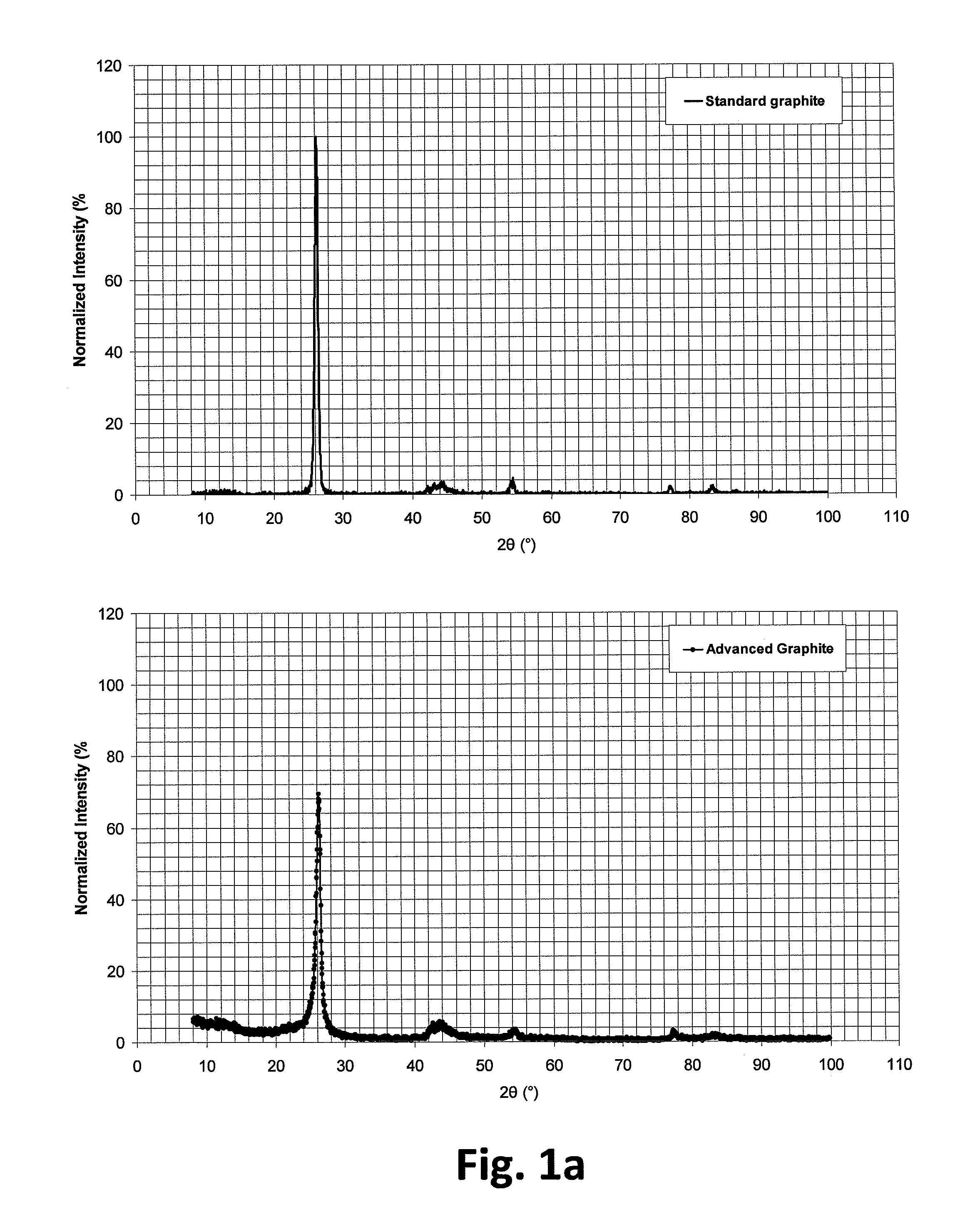Advanced graphite additive for enhanced cycle-life of lead-acid batteries
a graphite additive and cycle-life enhancement technology, applied in the field of lead-acid batteries, can solve the problems of reducing the cycle life of lead-acid batteries, unable to achieve the benefit of both higher surface area and higher surface area, and unable to achieve the effect of enhancing cycle life, improving cycle life, and improving cycle li
- Summary
- Abstract
- Description
- Claims
- Application Information
AI Technical Summary
Benefits of technology
Problems solved by technology
Method used
Image
Examples
Embodiment Construction
[0045]Preferred embodiments of the present invention will be described hereinbelow with reference to the accompanying drawings. In the following description, well-known functions or constructions are not described in detail because they would obscure the invention in unnecessary detail.
[0046]A graphitic carbon with a greater degree of defective sites in regular graphene layers is disclosed herein. Lower regularity of graphitic layers results in an Advanced Graphite with a highly advantageous surface area, e.g., about 250-350 m2 / g, as compared to typical numbers of between 10-30 m2 / g. A carbon based additive (e.g., Advance Graphite) would preferably have a surface area between 20 and 900 m2 / g, with a more preferred range of about 20-750 m2 / g, or even more preferred 20-550 m2 / g, or even more preferred 20-450 m2 / g. However, a most preferred range would be about 250-350 m2 / g. A suitable off-the-shelf Advanced Graphite substitute may include, for example, HSAG 300 and HSAG 400. HSAG 300,...
PUM
| Property | Measurement | Unit |
|---|---|---|
| degradation onset temperature | aaaaa | aaaaa |
| specific surface area | aaaaa | aaaaa |
| temperature | aaaaa | aaaaa |
Abstract
Description
Claims
Application Information
 Login to View More
Login to View More - R&D
- Intellectual Property
- Life Sciences
- Materials
- Tech Scout
- Unparalleled Data Quality
- Higher Quality Content
- 60% Fewer Hallucinations
Browse by: Latest US Patents, China's latest patents, Technical Efficacy Thesaurus, Application Domain, Technology Topic, Popular Technical Reports.
© 2025 PatSnap. All rights reserved.Legal|Privacy policy|Modern Slavery Act Transparency Statement|Sitemap|About US| Contact US: help@patsnap.com



